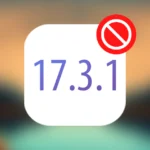Have you ever heard of ISO 27001? It helps to lock down your company’s data security. What’s more, it’s about integrating security into every part of your business.
So, if you want to keep your data safe and boost your reputation, you must get to grips with ISO 27001. But what are the ISO 27001 requirements exactly?
In this guide, we will try to answer this question. We will cover everything you need to know about the ISO 27001 security standards, the certification’s costs, as well as how long it takes to get certified.
List of ISO 27001 Requirements
Most business owners see ISO 27001 as a difficult-to-understand prescription. However, with an experienced ISO 27001 consultant by your side, it’s actually quite helpful.
So what is ISO 27001 framework exactly? To answer this question, let’s review each building block composing it.
1. Context of the Organization (Clause 4)
First, you should understand the scope of your ISMS or Information security management system.
It means you should identify all internal and external issues, relevant parties, and any information that needs protection. Once you finish this step, you can tailor the security measures to your organizational needs to address all risks effectively.
2. Leadership and Commitment (Clause 5)
It’s when senior management comes into play. The standard proclaims that your company’s leaders must show unwavering commitment to the ISMS. Simply put, they should actively engage in the security process:
- set clear roles,
- promote security awareness,
- and ensure the ISMS is integrated across all processes.
This matters because upper management is the driving force behind the security culture within the organization. If they don’t care about security, others won’t care either.
3. Planning for Risk Management (Clause 6)
It’s important to understand that ISO 27001 doesn’t prescribe a one-size-fits-all solution. Instead, it requires your security measures to be custom-fit to your organization.
To gain this, you should conduct thorough risk assessments to identify threats and design specific controls to mitigate these risks.
The objective here is clear: define specific threats and learn to mitigate them. Each business is unique, and so should the solutions.
4. Resource Allocation (Clause 7)
Effective implementation requires proper resources. The 7th clause highlights the importance of dedicated personnel.
You should find trustworthy people — inside your company or by addressing outside consultants — and provide them with the necessary training to manage your ISMS. Remember, a well-equipped team is your best defense against security breaches.
5. Operational Controls and Regular Assessments (Clause 8)
Now, managing your ISMS every day is a must. You should consistently check and tweak your security measures to ensure they work effectively. If you do this diligently, you can assess how these controls perform.
Plus, you can spot and fix any issues or weaknesses in your security setup.
6. Performance Evaluation (Clause 9)
If you think evaluating your ISMS is enough, let’s discuss this point together. It’s not enough just to meet standards — it’s about constantly improving.
Thus, regular internal and external audits are unavoidable. These checks show that every part of your ISMS works correctly and adheres to the strict ISO 27001 requirements checklist.
7. Nonconformity and Improvement (Clause 10)
The last stage in the framework deals with fixing any issues found during audits. Clearly, a continual improvement process is essential for keeping up with new threats and meeting the requirements for ISO 27001 certification. It helps you stay 100% sure that your ISMS is solid and effective.
Annex A — Control Categories
The second part of the standard, Annex A, outlines 93 different controls grouped into organizational, user, technology, and physical categories.
Don’t panic, though. Not every control will be necessary for every business. You should choose controls based on the specific risks your organization faces. Then, your choices are recorded in the Statement of Applicability, a key document in your ISMS.
How Long Does it Take to Get ISO 27001 Certified?
The time it takes to get certified can vary greatly. On balance, it depends on your company’s size and the complexity of your data systems. Small to medium-sized companies might be ready for an audit process in about four months and could achieve certification in six months. Larger companies may take a year or more to fully meet the standards.
The certification itself happens in two stages:
- The first stage checks that your ISMS documents — like policies and procedures — are well-crafted. You might also get advice on how to make your system even better.
- The second stage is more thorough. An auditor closely examines your business processes and controls to ensure they comply with standards.
How Much Does ISO 27001 Certification Cost?
The cost of getting 27001 certification can differ. Again, it should depend on your company’s size and the complexity of your security system. Small businesses might pay between $10,000 and $50,000, while larger companies could face higher costs.
Some core costs include buying security training materials and paying for the certification audit. After becoming certified, there’s an ongoing cost of about $15,000 annually for maintaining the standards and handling regular audits.
Conclusion
As you can see, ISO 27001 certification is a strategic investment in securing your organization’s data. Although the certification process requires time and financial resources, the benefits of enhanced security, compliance, and customer trust far outweigh the costs.
FAQ
In general, how many controls in ISO 27001 do you find?
It includes 93 controls, categorized under 14 groups, as outlined in Annex A of the standard.
What’s the biggest win from the certification?
The wins are, in fact, abundant. The most prominent ones include stronger security, more trust from customers and stakeholders, and a leg up in the competitive market.
Can any company work with this standard?
Absolutely. This certification can help businesses of any size or industry.
What do you need before going for the certification?
You’ll need a well-set-up ISMS that meets the ISO 27001 requirements list.
What are ISO 27001 internal audit requirements?
To conduct internal audits, you should assess compliance and effectiveness against the standard’s criteria.
More iDevice Central Guides
- iOS 17 Jailbreak RELEASED! How to Jailbreak iOS 17 with PaleRa1n
- Dopamine 2 Jailbreak IPA RELEASED For iOS 16.0 – 16.6.1
- Download iRemovalRa1n Jailbreak (CheckRa1n for Windows)
- Dopamine Jailbreak (Fugu15 Max) Release Is Coming Soon for iOS 15.0 – 15.4.1 A12+
- Cowabunga Lite For iOS 16.2 – 16.4 Released in Beta! Install Tweaks and Themes Without Jailbreak
- Fugu15 Max Jailbreak: All Confirmed Working Rootless Tweaks List
- iOS 14.0 – 16.1.2 – All MacDirtyCow Tools IPAs
- iOS Jailbreak Tools for All iOS Versions











Leave a Reply
You must be logged in to post a comment.